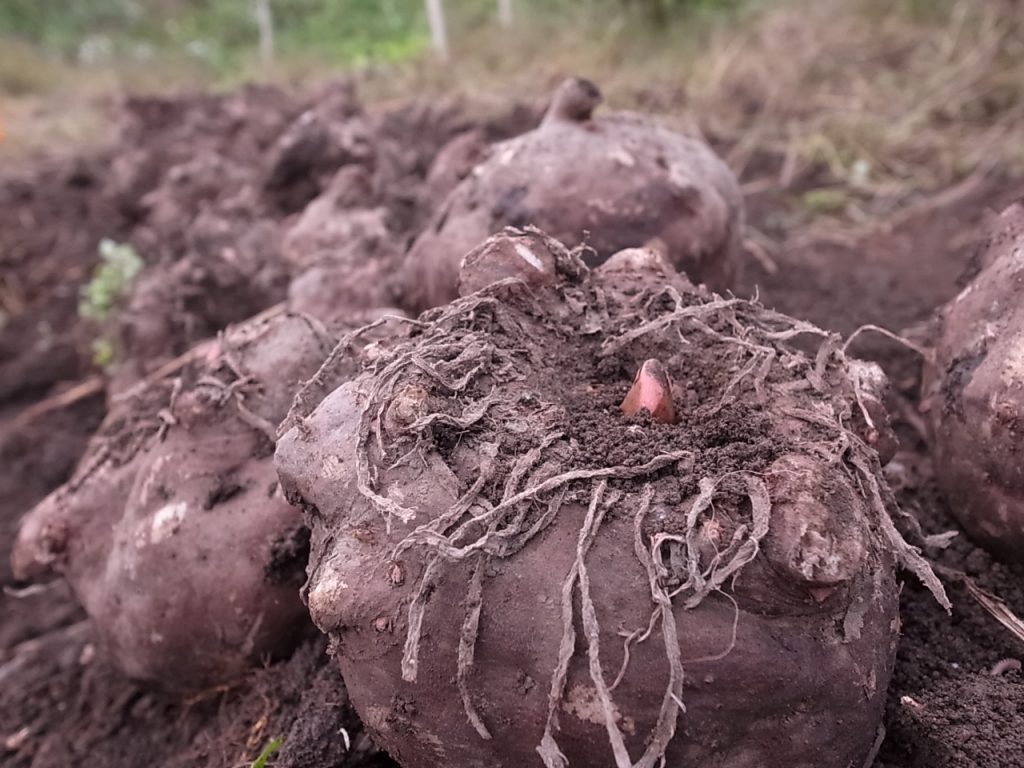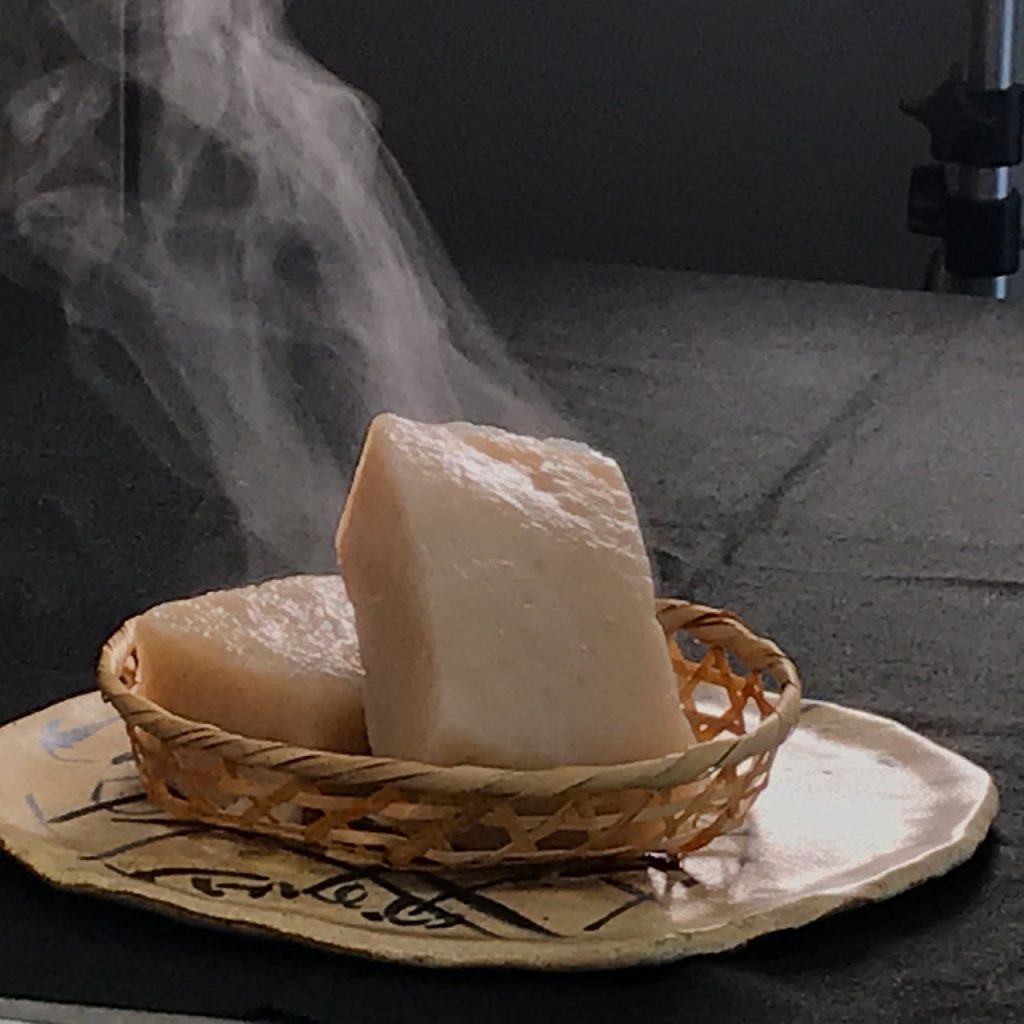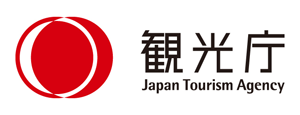
Shimonita is widely regarded as the konnyaku capital of Japan. Konjac is a gelatinous food processed from the bulbous root (corm) of Amorphophallus konjac, also known as devil’s tongue. The plant was introduced to Japan from China centuries ago and, for most of history, was used only as a medicinal herb. It thrives in Shimonita’s sandy, alkaline soil; once the method for processing the root into a food was discovered about 250 years ago, konjac became a major crop of the area.
Processing begins with slicing the root thinly and drying the slices, which are then ground into powder. The powder is reconstituted in water infused with calcium hydroxide (pickling lime), producing an indissoluble jelly-like substance. Natural coloring is often added, and then the konjac is boiled to set its shape.

A high crop volume is required to deliver the finished product. About 100 grams of root produces about 8.4 grams of powder. One hundred grams of powder will produce about 3.5 kilograms of konnyaku.
Konjac is most frequently sold as a firm block or as noodles. It is a popular ingredient in simmered dishes, where it picks up flavor from the broth in which it is cooked. It aids in digestion, detoxification, and is very low in calories, making it a popular diet food.
A recent development is konjac ice cream, available in cones at local tourist outlets. It is not quite as sweet as regular ice cream and does not melt as fast.
A 90-minute konjac-making experience is available at a local studio. (Weekends only, except New Year; book in Japanese via phone or email.)




